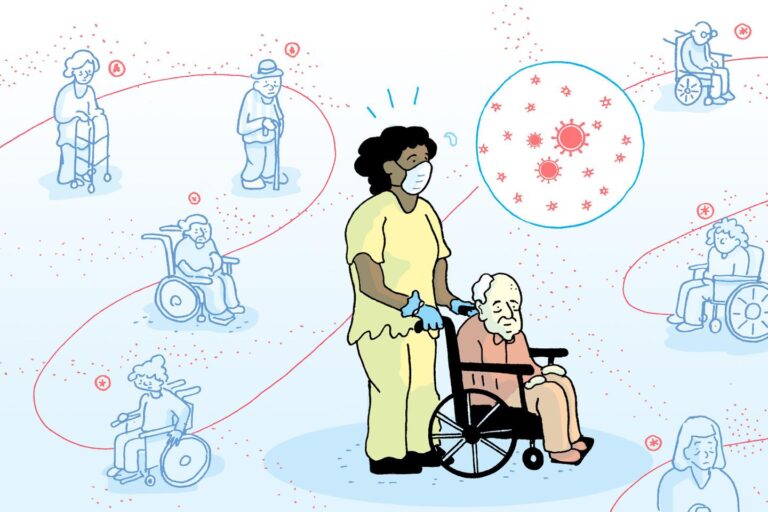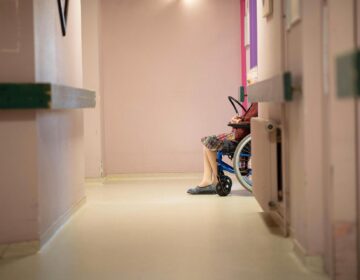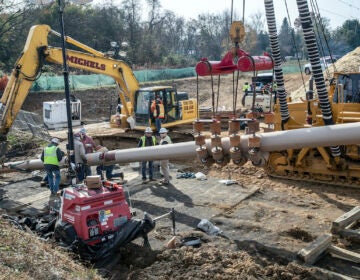Nursing home COVID-19 case, death data still missing from Pa.’s public reports
More than six months after COVID-19 arrived in Pa., the public still doesn’t have a full picture of how many people have died or been sickened by the virus in nursing homes.

(Dan Nott/Spotlight PA)
This story originally appeared on Spotlight PA.
___
Spotlight PA is an independent, non-partisan newsroom powered by The Philadelphia Inquirer in partnership with PennLIVE/The Patriot-News, TribLIVE/Pittsburgh Tribune-Review, and WITF Public Media. Sign up for our free weekly newsletter.
During the first three months of the coronavirus pandemic, the public had no way to measure which Pennsylvania nursing homes were hardest hit.
Amid mounting complaints from advocates and lawmakers, the state Department of Health in late May began releasing the number of resident cases and deaths by facility, but those early reports were incomplete and contained errors.
Even now, more than six months after COVID-19 arrived in Pennsylvania, the public still doesn’t have a complete picture of how many people have died or been sickened by the virus inside these vulnerable facilities.
Weekly reports released by the Department of Health are consistently missing data for more than 100 of the state’s 693 nursing homes. In at least one case, those omissions obscured a deadly outbreak from the public. While the specific facilities missing data varies each week, 42 have not shown anything for more than two months.
It’s not clear why, week after week, some facilities are still missing the counts.
The state health department said it’s working with facilities to accurately report case information, but did not say why recurring problems have not been corrected. Many facility managers contacted by Spotlight PA said they are meeting reporting requirements, but could not explain why their data is not showing up in state reports.
“There’s just not a lot of transparency here,” said Diane Menio, executive director at the Philadelphia-based advocacy group CARIE.
Given that all nursing homes in the state were required to complete at least one round of state-mandated coronavirus testing by July 28, there’s no excuse for any facility to be missing data at this point, she said.
For seven weeks, the state listed “no data” for the number of coronavirus cases and deaths among residents at the Cedarbrook Senior Care and Rehabilitation nursing home in Allentown.
But when the state released an updated report Aug. 18, the Lehigh County-run facility joined the ranks of some of the hardest-hit nursing homes in the state: 80 residents had died since the start of the pandemic, the second-highest death toll among the state’s 693 facilities.
Despite showing “no data” for weeks, the facility has consistently reported its data to state and federal systems and has maintained regular communication with the state health department, said Jason Cumello, administrator at Cedarbrook.
“This area of Pennsylvania, the Lehigh Valley, maintained some of the highest per capita infection rates in Pennsylvania throughout a large part of the pandemic, particularly earlier in the pandemic, which is reflected in the number of cases seen in nursing homes throughout this area,” Cumello said, adding that most of the facility’s deaths occurred before July 1.
Cumello acknowledged that Cedarbrook has had some problems with its data. The county’s two facilities, Allentown and Fountain Hill, initially were not reported separately. There was also some confusion about how to report daily and cumulative case counts.
Those issues were fixed by early August, Cumello said.
He deferred questions about state data to the Department of Health, which did not respond to questions from Spotlight PA about Cedarbrook’s situation.
All facility-level data included in the state’s current weekly updates is self-reported by nursing homes. Early versions of the reports were supplemented with data from PA-NEDSS, the state’s disease reporting system, which collects data from health-care systems and labs.
Those reports were full of errors, with some facilities unable to explain where the numbers came from. By late June, the state stopped including PA-NEDSS data, relying only on self-reported nursing home data to populate its weekly updates.
Health department officials have said they want to encourage facilities to self-report, but did not respond to follow-up questions from Spotlight PA about why the state continues to use this data if it is incomplete, contains errors, and if other data sources are available.
The state requires nursing homes to report facility information — including resident and employee coronavirus cases, deaths, and the facility census — daily through a platform called Corvena. They are also required to submit much of the same information through a separate platform called Survey123.
Additional reporting is required if a facility detects new cases. That doesn’t include separate federal reporting requirements, said Anne Henry, chief of government affairs and senior vice president at LeadingAge PA, which represents about 360 nonprofit long-term care facilities statewide.
Software bugs and outages make it difficult for facilities to submit data or log in, adding more stress to an already taxing situation, she and other industry advocates argue.
“It is just overwhelming, truly overwhelming,” Henry said. “And then when you have software glitches in the middle of that, it just throws everything into a whirlwind.”
Even without a complete picture, it’s clear that COVID-19 has had a devastating toll on people inside the state’s nursing homes. At least 3,239 residents of facilities licensed by the state health department have died since the start of the pandemic, accounting for about 42% of all coronavirus deaths in the state.
Data posted to the federal Centers for Medicare and Medicaid Services website, which is reported by nursing homes to the Centers for Disease Control and Prevention weekly, further complicates the picture: Many of the totals listed for facilities’ resident case or death counts don’t match the state’s numbers.
Spotlight PA contacted 18 of the facilities that have been consistently listed as having “no data” in the weekly state reports. Most officials said they have, in fact, been meeting reporting requirements, but couldn’t explain why their data was missing.
“I can’t speak as to why the information is not showing up on the [Department] of Health reports,” Mike Jacobs, who handles government affairs for Bedrock Care, said by email. “We have complied as required by the state and federal governments with respect to our reporting.”
Bedrock Care operates five Philadelphia facilities — Care Pavilion, Cliveden, Maplewood, Tucker House, and York — that have been missing data since June 30. Figures provided by Jacobs show that all of those facilities have had resident and staff cases. All but one, Maplewood, have had deaths: 140 in total.
With many facilities still limiting visitors, it’s hard for families of current or prospective residents to see what’s happening inside nursing homes for themselves, making these case reports even more important, said Brian Lee, executive director of Families for Better Care, a national long-term care watchdog group.
Menio, of CARIE, said she continues to worry about those who are currently trying to pick a facility for a loved one.
“If we at least knew the case numbers, it would be helpful, because some of the people who are calling us are worried about that,” she said. “We need to be a good source of information for families and consumers, and it’s hard to do that when we don’t have the information.”
The state health department did not respond to specific questions about why so many facilities are still reported as having “no data.” Instead, a spokesperson said the agency is calling and sending “compliance letters to facilities to communicate the importance of reporting and its requirement by order.”
“As another resource for facilities, the department created an FAQ and offered webinars in order to ensure compliance,” the statement said. “Furthermore, the department is constantly working with all facilities to make sure the data we provide is accurate.”
In a June 18 letter, the health department said nursing home administrators could face daily fines or prison time if they did not comply with reporting requirements.
A spokesperson did not say whether any state penalties have been issued, but said in a statement that “the federal government is also working to provide further enforcement with these facilities.”
Henry, of LeadingAge PA, said some facilities have faced federal fines but have since disputed those penalties. She is not aware of any facilities that have been fined by the state for failure to comply with data requirements.
Menio called the situation “disturbing” and questioned why the health department has not done more to enforce reporting requirements.
“If facilities aren’t reporting it, they should be going after them,” Menio said. “But nothing’s happening.”

100% ESSENTIAL: Spotlight PA relies on funding from foundations and readers like you who are committed to accountability journalism that gets results. If you value this reporting, please give a gift today at spotlightpa.org/donate.
WHYY is your source for fact-based, in-depth journalism and information. As a nonprofit organization, we rely on financial support from readers like you. Please give today.




![CoronavirusPandemic_1024x512[1]](https://whyy.org/wp-content/uploads/2020/03/CoronavirusPandemic_1024x5121-300x150.jpg)


